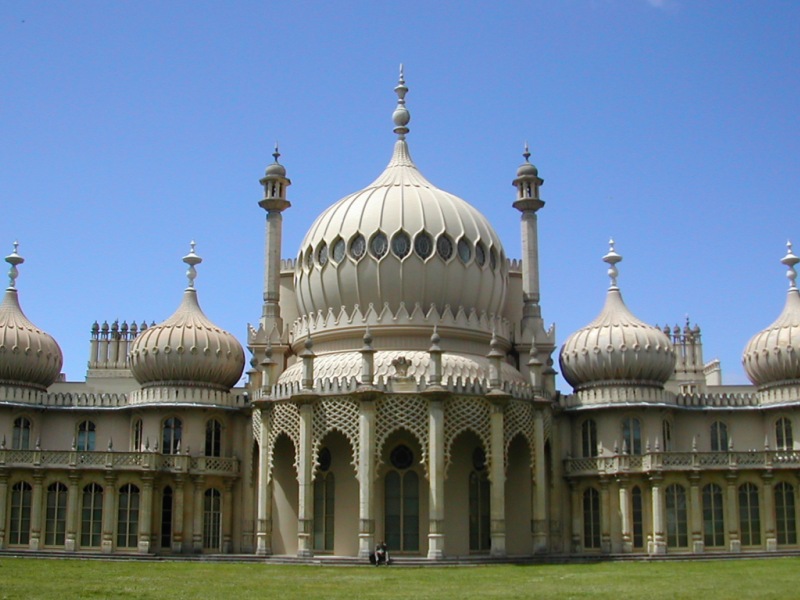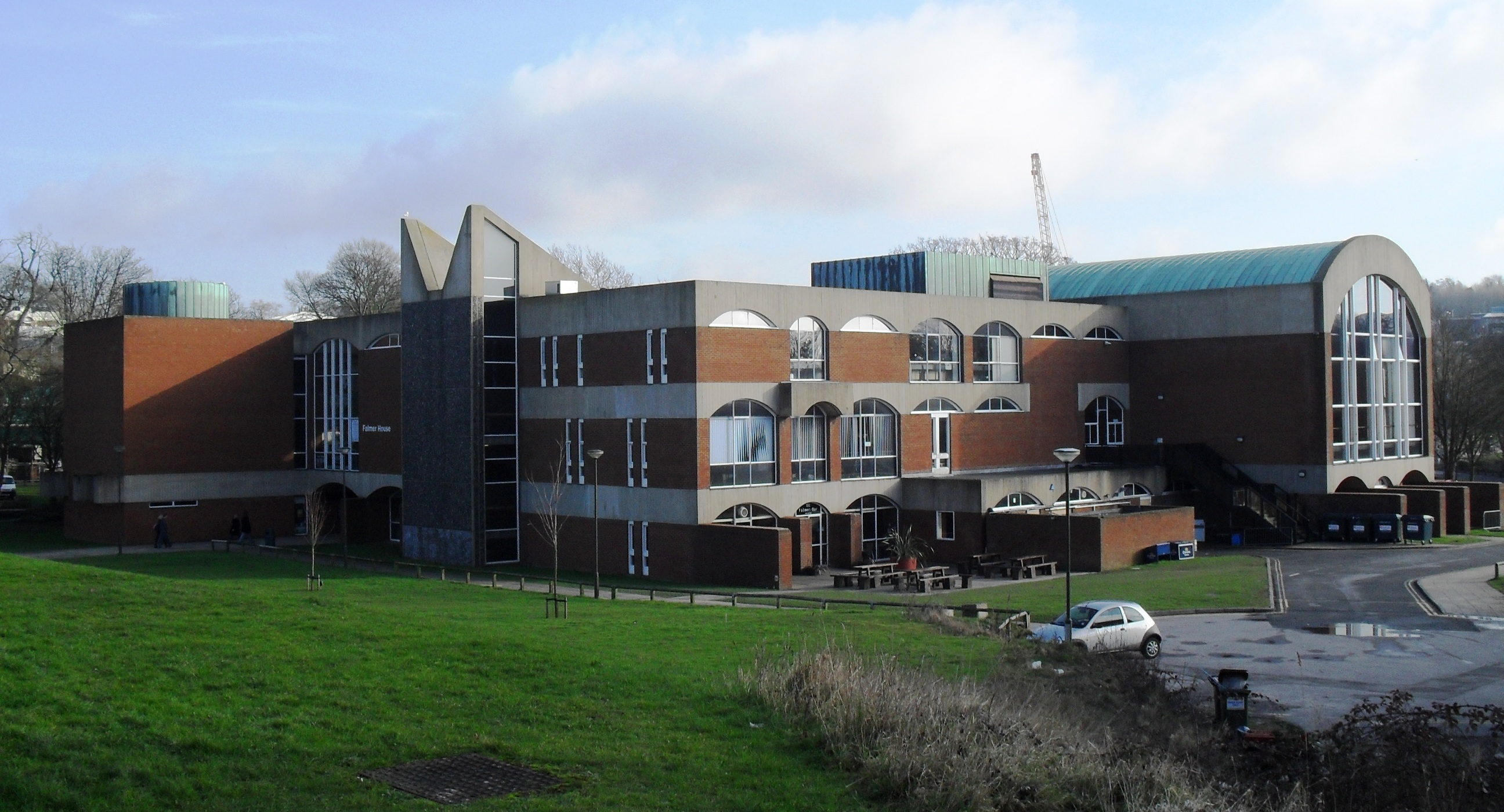Grade I listed buildings in Brighton and Hove on:
[Wikipedia]
[Google]
[Amazon]

 There are 24
There are 24

Grade I listed buildings
In the United Kingdom, a listed building or listed structure is one that has been placed on one of the four statutory lists maintained by Historic England in England, Historic Environment Scotland in Scotland, in Wales, and the Northern Irel ...
in the city of Brighton and Hove
Brighton and Hove () is a city and unitary authority in East Sussex, England. It consists primarily of the settlements of Brighton and Hove, alongside neighbouring villages.
Often referred to synonymously as Brighton, the City of Brighton and H ...
, England. The city, on the English Channel
The English Channel, "The Sleeve"; nrf, la Maunche, "The Sleeve" (Cotentinais) or ( Jèrriais), (Guernésiais), "The Channel"; br, Mor Breizh, "Sea of Brittany"; cy, Môr Udd, "Lord's Sea"; kw, Mor Bretannek, "British Sea"; nl, Het Kana ...
coast approximately south of London, was formed as a unitary authority
A unitary authority is a local authority responsible for all local government functions within its area or performing additional functions that elsewhere are usually performed by a higher level of sub-national government or the national governmen ...
in 1997 by the merger of the neighbouring towns of Brighton and Hove
Hove is a seaside resort and one of the two main parts of the city of Brighton and Hove, along with Brighton in East Sussex, England. Originally a "small but ancient fishing village" surrounded by open farmland, it grew rapidly in the 19th c ...
. Queen Elizabeth II granted city status City status is a symbolic and legal designation given by a national or subnational government. A municipality may receive city status because it already has the qualities of a city, or because it has some special purpose.
Historically, city status ...
in 2000.
In England, a building or structure is defined as "listed" when it is placed on a statutory register of buildings of "special architectural or historic interest" by the Secretary of State for Culture, Media and Sport
The secretary of state for digital, culture, media and sport, also referred to as the culture secretary, is a Secretary of State (United Kingdom), secretary of state in the Government of the United Kingdom, with overall responsibility for strateg ...
, a Government department, in accordance with the Planning (Listed Buildings and Conservation Areas) Act 1990
The Planning (Listed Buildings and Conservation Areas) Act 1990 is an Act of Parliament of the United Kingdom that altered the laws on granting of planning permission for building works, notably including those of the listed building system in En ...
. English Heritage
English Heritage (officially the English Heritage Trust) is a charity that manages over 400 historic monuments, buildings and places. These include prehistoric sites, medieval castles, Roman forts and country houses.
The charity states that i ...
, a non-departmental public body
In the United Kingdom, non-departmental public body (NDPB) is a classification applied by the Cabinet Office, Treasury, the Scottish Government and the Northern Ireland Executive to public sector organisations that have a role in the process of ...
, acts as an agency of this department to administer the process and advise the department on relevant issues. There are three grades of listing status: Grade I, the highest, defined as being of "exceptional interest"; Grade II*, "particularly important buildings of more than special interest"; and Grade II, the lowest, used for buildings of "special interest".
Brighton and its westerly neighbour Hove developed independently as fishing villages on the English Channel coastline. Brighton was founded as a Saxon homestead
Homestead may refer to:
*Homestead (buildings), a farmhouse and its adjacent outbuildings; by extension, it can mean any small cluster of houses
* Homestead (unit), a unit of measurement equal to 160 acres
*Homestead principle, a legal concept t ...
and had a population of about 400 at the time of the Domesday survey
Domesday Book () – the Middle English spelling of "Doomsday Book" – is a manuscript record of the "Great Survey" of much of England and parts of Wales completed in 1086 by order of King William I, known as William the Conqueror. The manusc ...
in 1086. Hove had a long tradition of farming on the fertile downland
Downland, chalkland, chalk downs or just downs are areas of open chalk hills, such as the North Downs. This term is used to describe the characteristic landscape in southern England where chalk is exposed at the surface. The name "downs" is deriv ...
behind the coast, and was also known for smuggling activity. Both places were in decline in the mid-17th century; but local doctor Richard Russell's advocacy of drinking and bathing in seawater at Brighton attracted members of Britain's high society
High society, sometimes simply society, is the behavior and lifestyle of people with the highest levels of wealth and social status. It includes their related affiliations, social events and practices. Upscale social clubs were open to men based ...
and royalty. This included the Prince of Wales
Prince of Wales ( cy, Tywysog Cymru, ; la, Princeps Cambriae/Walliae) is a title traditionally given to the heir apparent to the English and later British throne. Prior to the conquest by Edward I in the 13th century, it was used by the rulers ...
, who commissioned architect John Nash to build a house; the result was the city's best-known building, the architecturally eclectic Royal Pavilion
The Royal Pavilion, and surrounding gardens, also known as the Brighton Pavilion, is a Grade I listed former royal residence located in Brighton, England. Beginning in 1787, it was built in three stages as a seaside retreat for George, Princ ...
.
Helped by its proximity to London, good climate and the royal patronage it enjoyed, Brighton developed rapidly in the early 19th century: the number of houses doubled to about 8,000 between 1820 and 1830. Three local architects— Charles Busby, Amon Wilds
Amon Wilds (1762 – 12 September 1833) was an English architect and builder. He formed an architectural partnership with his son Amon Henry WildsIn this article, Amon Wilds is referred to as ''Wilds senior'' and his son Amon Henry Wilds a ...
and his son Amon Henry Wilds
Amon Henry Wilds (1784 or 1790 – 13 July 1857) was an English architect. He was part of a team of three architects and builders who—working together or independently at different times—were almost solely responsible for a surge in resid ...
—were responsible for several innovative, practical and elegant residential developments and public buildings in both Brighton and Hove. The Kemp Town
Kemp Town Estate, also known as Kemp Town, is a 19th-century Regency architecture residential estate in the east of Brighton in East Sussex, England, UK. It consists of Arundel Terrace, Lewes Crescent, Sussex Square, Chichester Terrace, and ...
and Brunswick estates bordered Brighton to the east and west respectively. The town was thereby joined to Hove, in turn stimulating its growth. Kemp Town was primarily the work of Barry and Wilds senior, and was conceived as a seven-part design: two sea-facing terraces (Arundel Terrace and Chichester Terrace), a square
In Euclidean geometry, a square is a regular quadrilateral, which means that it has four equal sides and four equal angles (90- degree angles, π/2 radian angles, or right angles). It can also be defined as a rectangle with two equal-length a ...
(Sussex Square) with houses on three sides, and a two-part crescent (Lewes Crescent) joining these sections. All seven parts are listed at Grade I. Similarly, the four parts of Brunswick Terrace and the east and west sides of Brunswick Square, which formed the main part of the Wilds and Busby partnership's Brunswick estate, have been awarded Grade I status.
A combination of Victorian enthusiasm for church-building, the importance of churchgoing as part of Brighton's social calendar and a need to provide places for poor people to worship resulted in many churches being built in Brighton and Hove in the 19th century. Five have a Grade I listing, including one that is no longer in use. The pleasure pier
Seaside pleasure pier in Brighton, England. The first seaside piers were built in England in the early 19th century.">England.html" ;"title="Brighton, England">Brighton, England. The first seaside piers were built in England in the early 19th ...
was another Victorian trend, and Brighton's West Pier is one of only two Grade I-listed piers in England; it is now in ruins after a series of storms and fires caused it to collapse. After it closed in 1975, a section fell into the sea in 1984, then the Great Storm of 1987 caused more damage. Partial demolition followed, but in the space of five months from December 2002 it suffered two further collapses and two devastating fires.
In the 20th century, both Brighton and Hove expanded by absorbing surrounding villages, many of which had ancient buildings. Ovingdean
Ovingdean is a small, formerly agricultural, village in the east of Brighton and Hove, East Sussex, England.
Overview
It was absorbed into the administrative borough of Brighton, East Sussex, England in 1928, and now forms part of the city of ...
and Stanmer
Stanmer is a small village on the eastern outskirts of Brighton, in East Sussex, England.
History
The etymological root of the name is "Stony Mere", Old English for "stone pond", referring to the sarsen stones around Stanmer village pond. The ...
were two such places, and Ovingdean's 12th-century parish church
A parish church (or parochial church) in Christianity is the church which acts as the religious centre of a parish. In many parts of the world, especially in rural areas, the parish church may play a significant role in community activities, ...
and an early 18th-century mansion in Stanmer Park—now the city's largest expanse of green space—are the oldest Grade I listed buildings in Brighton and Hove. Sussex University, built on open land near Stanmer as the first new university of the post-war era
In Western usage, the phrase post-war era (or postwar era) usually refers to the time since the end of World War II. More broadly, a post-war period (or postwar period) is the interval immediately following the end of a war. A post-war period c ...
, was designed by Sir Basil Spence
Sir Basil Urwin Spence, (13 August 1907 – 19 November 1976) was a Scottish architect, most notably associated with Coventry Cathedral in England and the Beehive in New Zealand, but also responsible for numerous other buildings in the Moderni ...
; Falmer House, the main building on the campus, received a Grade I listing in 1993 and is the most recently built Grade I building in the city.
Grade I listed buildings
See also
* Buildings and architecture of Brighton and Hove *List of conservation areas in Brighton and Hove
, there are 34 conservation areas in the city of Brighton and Hove, a seaside resort on the English Channel coast in southeast England. The definition of a conservation area is a principally urban area "of special architectural or historic int ...
*
References
Notes
Bibliography
* * * * * * * * * * * * {{DEFAULTSORT:Brighton and Hove Lists of Grade I listed buildings in East Sussex